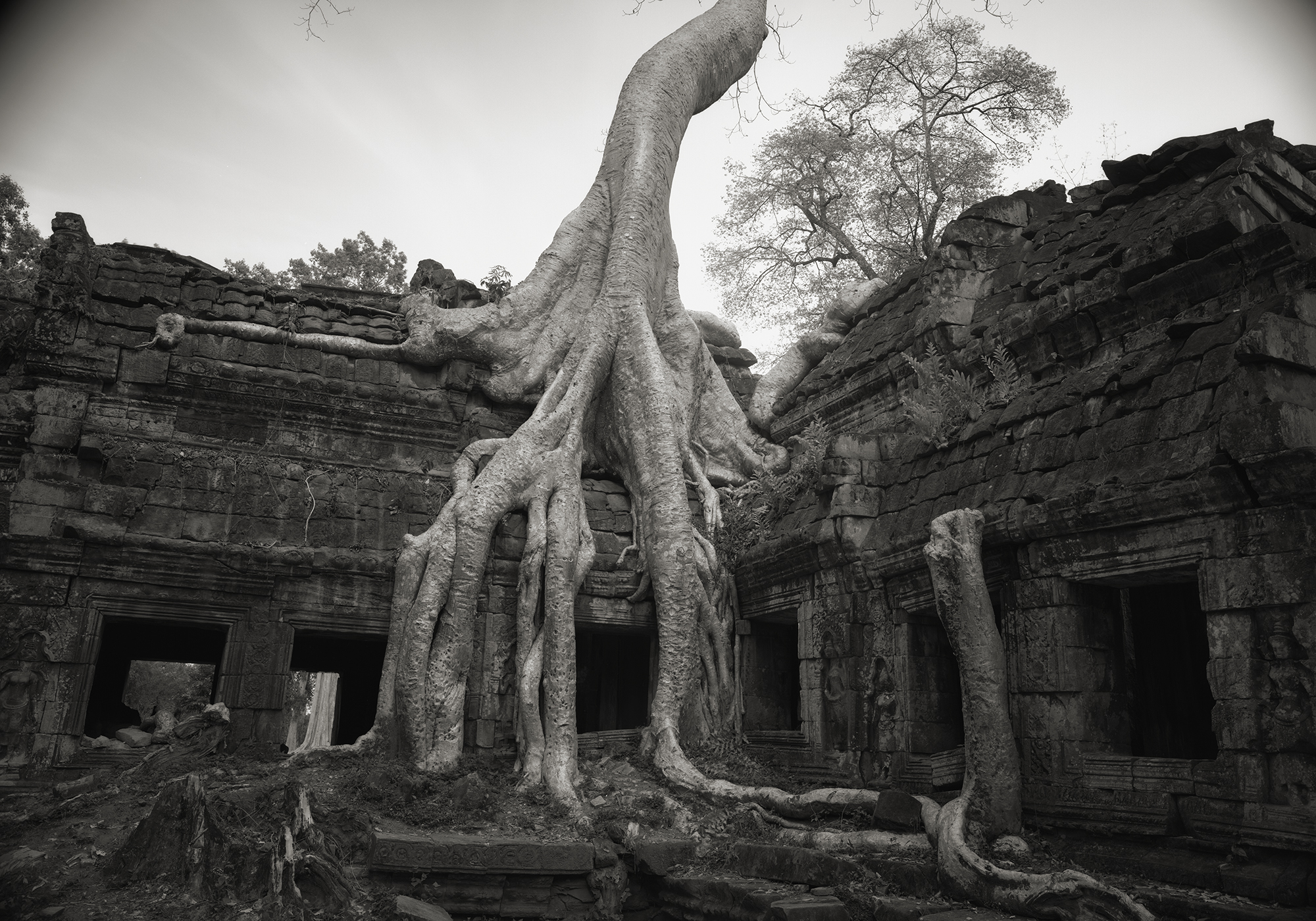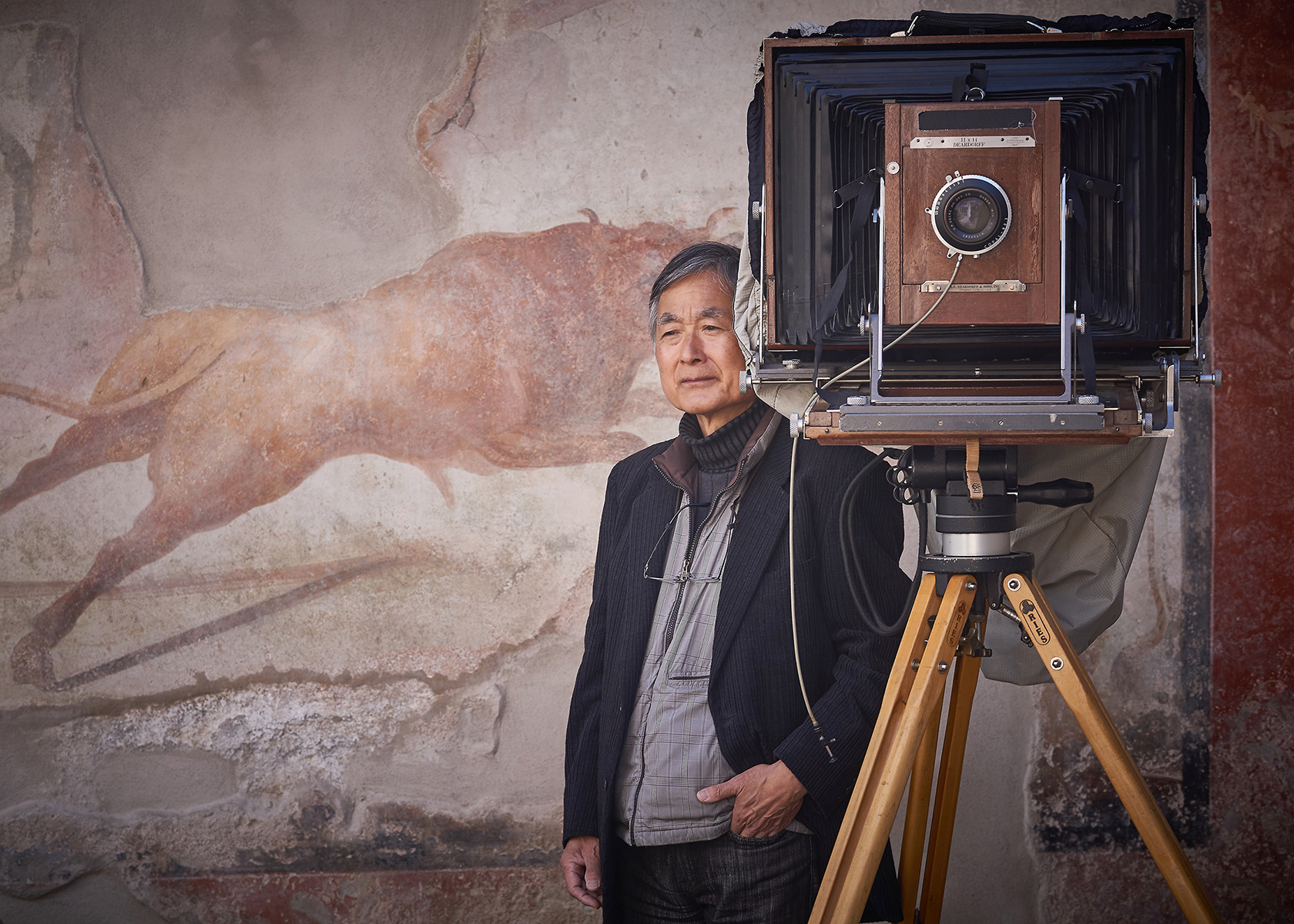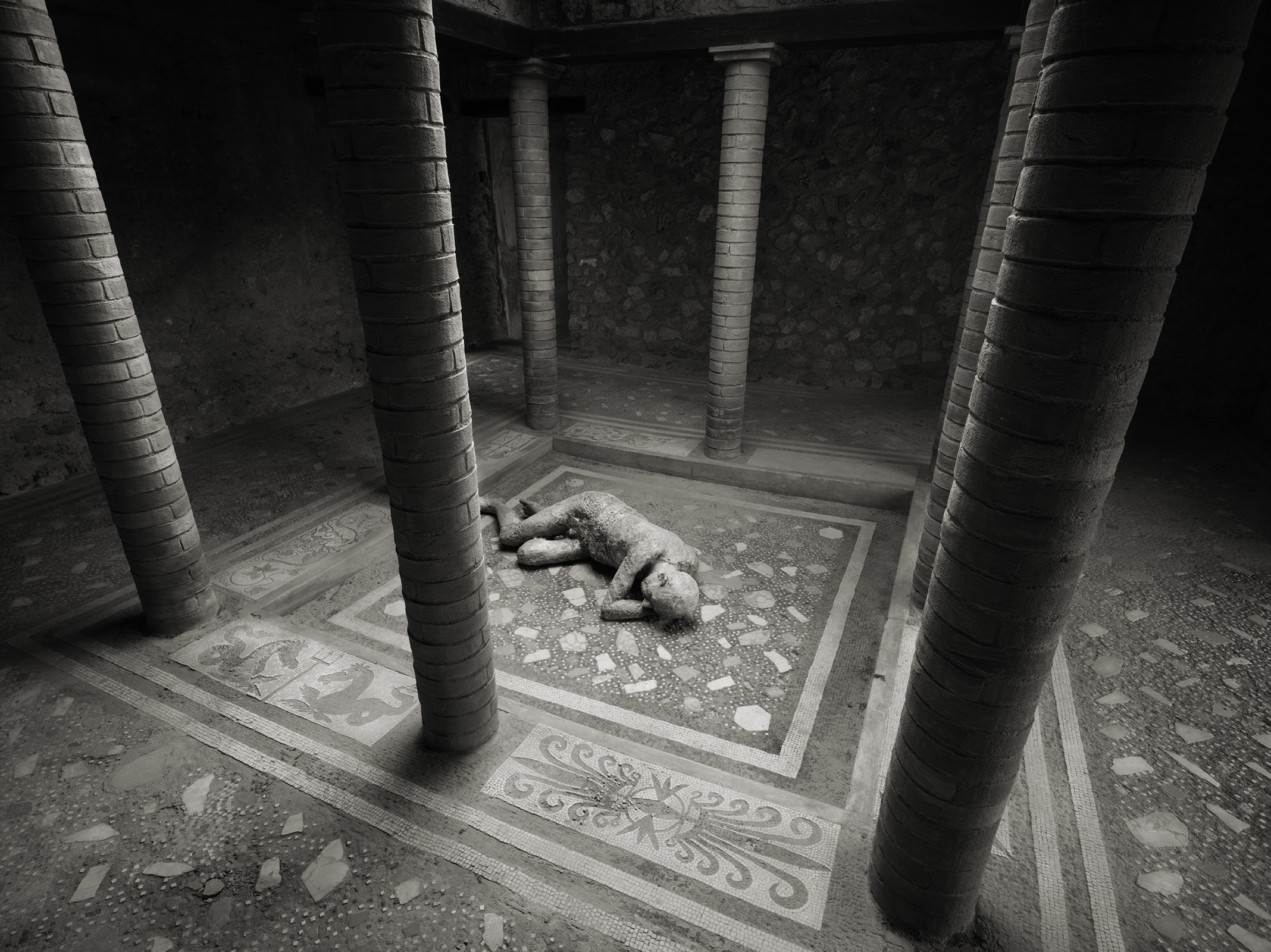Born in Osaka in 1949 and raised in Hiroshima, Kenro Izu began photographing in the 1970s, completing his training at Nihon University in Tokyo. In 1970 he moved to New York, where he still lives and works.
Inspired by the images of Victorian Francis Frith and ancient photographic expeditions to Egypt, he embarked on his first trip to the land of the Pyramids in 1979. In particular he was strongly impressed by the spirituality of the place and the deep sense of transience inspired by the sight of the ruins.
For more than 30 years, Izu has gone to ever more distant destinations photographing the world’s most evocative “sacred places.” From Scotland to Mexico, from Cambodia to India and Indonesia, from Syria to Tibet.
There is an eerie silence that shines through Kenro Izu’s images. A constant journey through the metaphors of life, death and decay.
As a result, he opened his own still life studio. Considered to be one of the most experienced existing printers of the platinum/palladium technique, Izu has combined a prolific commercial work with an artistic journey made up of several personal projects.
In recent years, the Japanese photographer has traveled the world to capture various sacred monuments in their natural settings. Kenro Izu
In fact, Kenro Izu’s photography, amid still lifes of flowers, figures and monuments, reveals the complex beauty of life, with particular attention to capturing the elements of tragedy and decay.
His works have been featured in numerous solo and group exhibitions, shown in the United States, Europe and Japan.
The Photography
The folds and hollows of the spine, the sinuosity of the hips, the outline of the shoulder blades, the curves and crevices of the back and belly are drawn sharply by the play of shadows, as are the soft petals of a rose or the mysterious lines of pyramids.
In contrast to modern photographers who shoot dozens of photos of each subject, Izu photographs only after careful thought.
In fact, because of the size of the large-format negatives (35.6 x 50.8 cm, the same size as the final print) and the size of the view camera, he can carry only a few negatives with him. Through his unique technique, the Japanese photographer manages to capture the spiritual essence of the subject.
His platinum prints, made by a process using ferrous salts, create a subtle depth and a matte surface that is particularly prized for its almost unlimited range of shades of gray.
We talk with Kenro, let’s discover more about him!
-What are the biggest challenges you have met in your career?
The balance of my daily commercial works to sustain my life, and my artistic work. The high demand of commercial works sometimes overwhelmed my artistic work, which caused long hours of days/monthes.
-Have you already realized your professional and private life goals?
Though I am not sure what my goal is, I am still working on an artistic goal in my photography. It is to find and capture “essence of life” in photography. I am happy with my life in Kanazawa, Japan now.
-How would you describe your work?
Searching for a passage of life, find the beauty in life.
-How much creativity matters in your work?
Without creativity, there is no Art. I don’t particularly looking for “new” but looking deep, which takes creativity.



